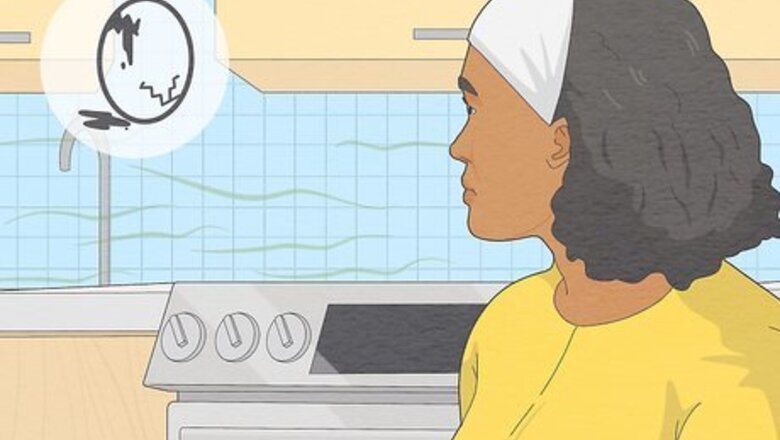
views
- Place carbon monoxide detectors throughout your home. If the detector picks up on carbon monoxide, it will make a sharp beeping noise and alert you to the problem.
- Watch out for hissing sounds, white dust clouds, and sulphuric odors, as these may be signs that you have a gas leak.
- If you suspect you have a gas leak, evacuate your home, opening windows and doors on your way out. Once you’re across the street, call 911.
Checking for Signs of Natural Gas in Your Home
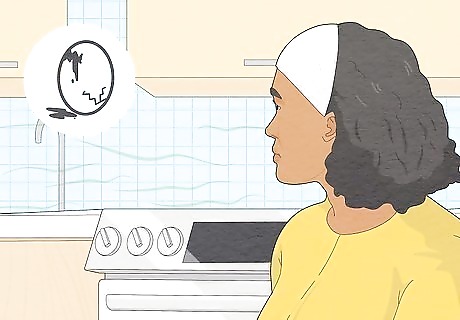
See if your home has a rotten egg or sulfuric smell. Natural gases from your appliances have the added chemical mercaptan, making the gas have an unpleasant odor so you can detect it easier. If you notice a sulphuric smell in your home, you may have a gas leak near your stove, water heater, or another appliance. If you have a gas stove, check the burners to ensure they’re completely turned off. Immediately turn off the gas supply line and leave the building if you detect a strong sulphuric odor.
Check your natural gas alarms, if you have one installed. These will usually be provided by your gas company or by your fire department and are located near gas appliances. Natural gas alarms will report "GAS" or beep continuously if there is natural gas detected in your home. If you have a monitored alarm system, and it appears to be giving a trouble message, see if a gas leak is detected by the panel.
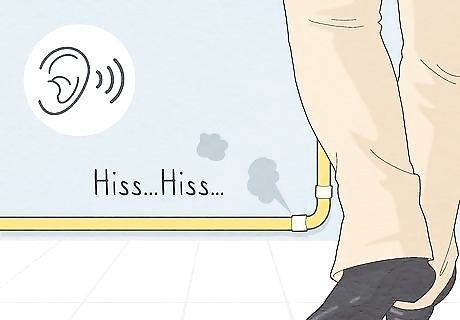
Listen for a hissing or whistling noise near your appliances or pipes. You may be able to hear the gas leaking from loose connections. If you hear a faint hiss or whistle you haven’t heard before, walk around your home and listen for a change in volume. The louder it gets, the closer you may be to a possible leak. The gas makes a hiss or whistle when it escapes through a tight space, so not all gas leaks will make a noise.
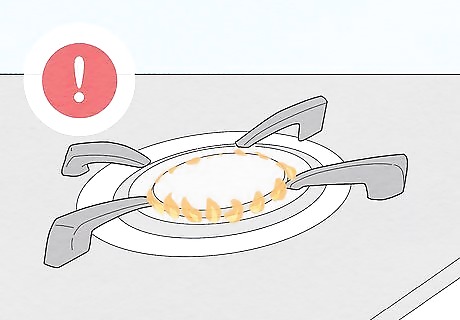
Notice if the flames on your stove are orange/yellow instead of blue. Gas stoves should have blue flames, meaning they have enough oxygen for the gas to combust completely. When the flames on your stove are yellow or orange, the natural gas isn’t burning properly and could be contributing to a gas leak. If you see orange or yellow flames, turn off your stove immediately. Gas stoves may have orange or yellow flames when first lit and should only be cause for concern if the color stays consistent. If you suspect a gas leak, do not turn on your stove to check the flame color.
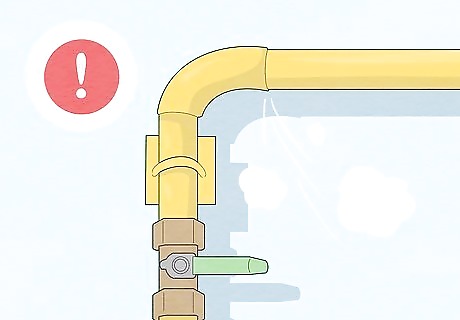
Watch for a white cloud of dust moving near your gas lines. While natural gas is usually colorless, a leak may stir up dust and make a small cloud near your pipes. Keep your eyes open for any mist or clouds that you can’t account for otherwise.
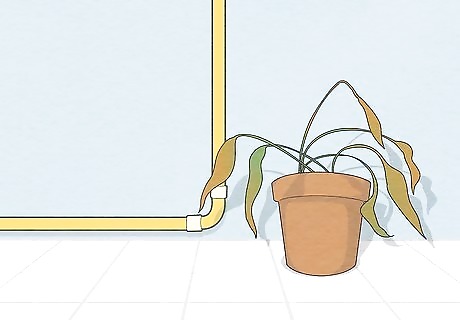
Look to see if your houseplants are dying. Plants need carbon dioxide to survive, and gas leaks can limit the amount your plants get. If you notice your plants wilting or yellowing even though you still care for them regularly, you may have gas leaking into your home. Keep plants in areas where gas leaks are common, like in your kitchen or a fireplace, to use as a form of carbon monoxide detection.

Check your gas bill to see if it’s higher than normal. Compare your gas bills over a 2-3 month period to see if there’s been a significant change in cost. If you notice a spike in your bill, contact your utility company first to make sure your bill is correct. If everything is right on their end, let them know you may have a gas leak in your home. Keep in mind any changes in your lifestyle. For example, if it’s winter and you’ve been using your furnace more, your gas prices may be higher as a result. Compare old bills from the same time of year to see a more accurate change.

Notice physical signs of gas inhalation, like headaches and body pain. Breathing natural gas or carbon monoxide limits the amount of oxygen your body receives. If you start to experience body pains, headaches, lightheadedness, or nausea for no apparent reason, check your gas lines and appliances to see if you have a leak. Other symptoms of carbon monoxide poisoning include reduced appetite, difficulty breathing, fatigue, and eye and throat irritation.
Locating a Natural Gas Leak in Your Pipes
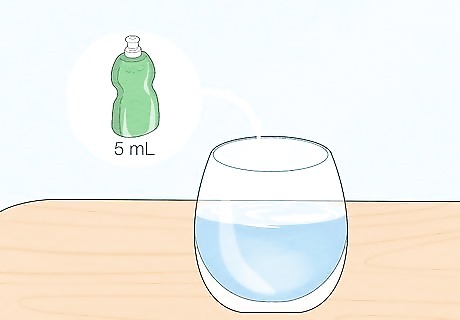
Mix 1 cup (240 mL) of water with 1 teaspoon (5 mL) of dish soap. Fill a cup with water and squeeze in a dime-sized amount of dish soap. Then, stir the soap and water together until it starts to form suds. If you don’t have dish soap, you may substitute it with a dime-sized amount of liquid laundry detergent instead.
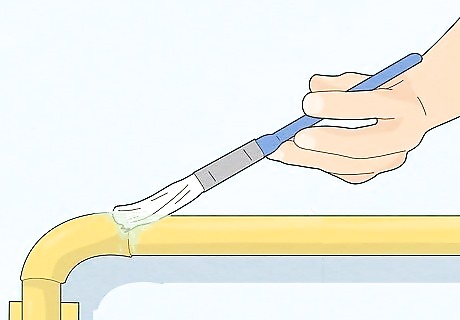
Brush the soapy water onto your pipe connection. Dip a small paintbrush into the soapy water so the bristles are completely coated. Then, paint a thin layer of water around the pipe connections where you think there may be a leak. Brush the water around the whole connection point so it’s saturated. Common Places for Gas Leaks Check the fittings between 2 pipes since the insulation ring may be damaged or old. Look near valve shut-offs to see if they're slightly opened or loose. Find where your gas lines connect to your appliances to see if the connections are loose or damaged.
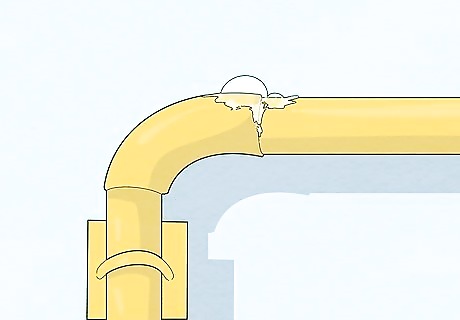
Look for bubbles where you applied the soapy water. Any gas leaking from your pipe connections will make bubbles in the soapy water. If bubbles don’t form at the connection, the gas leak may be in a part of your pipes. Continue brushing or spraying the pipes with soapy water and watching for bubbles until you find the source of your leak.
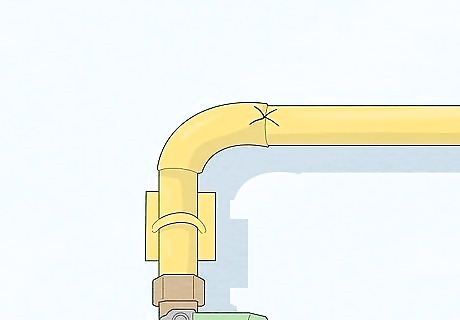
Mark the spot on the pipe so a professional can fix it. Use a marker to draw a line on the pipe where you found the gas leak. Once it’s marked, contact your utility company and let them know that you have a gas leak in your home so they can fix it. Never attempt to fix gas lines yourself, as working around leaking gas is incredibly dangerous.
Using Gas Detectors
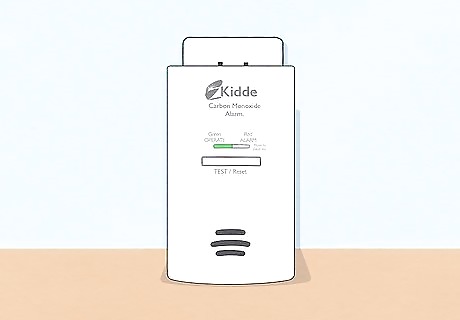
Place carbon monoxide detectors throughout your home. Carbon monoxide (CO) is a colorless and odorless gas toxic to the body. To detect carbon monoxide, place at least 1 detector on each level of your home, according to your detector’s directions. If it detects carbon monoxide in the air, it will chirp loudly, alerting you to the problem. If you're using plug-in detectors rather than battery-powered detectors, put your carbon monoxide detectors in an outlet at knee level or lower, as CO is heavier than air. Never block a carbon monoxide detector with furniture or curtains, as they can restrict airflow. If you have pets or children that would interfere with the detectors at knee level, plug the devices in chest-level outlets.Tip: Combination smoke and carbon monoxide detectors are available at your local hardware store and offer double protection against fire and gas leaks.

Use a handheld natural gas detector to find the source of a leak. Portable gas detectors can sense the gas concentration in any area of your home. Walk through your home with the gas detector, keeping an eye on the display meter. If it senses a concentration of 10% methane or more, an alarm will go off to let you know the area is not safe.
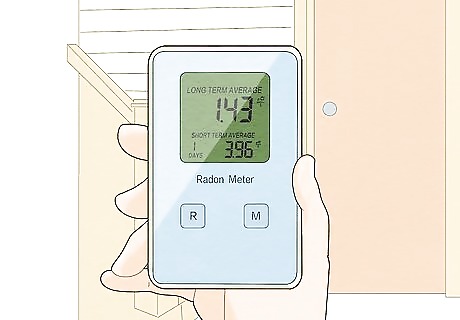
Set a radon detection test in your home for 48-72 hours. Start by closing all your windows and doors 12 hours prior to placing the test. Then, place a short-term test kit in the lowest level of your home and leave it there for 48-72 hours. Use the envelope provided in the kit to send the test results back to the company's lab, where they will calculate the radon levels. If the results come back with 4 pCi/L (picocuries per liter) or higher, call a professional to install a radon mitigation system in your home. Radon is a natural gas that’s odorless, colorless, tasteless, and naturally found in the ground. Avoid keeping or placing radon tests in damp and humid areas, such as the kitchen, bathroom, or laundry room.Tip: Use long-term radon tests if you want to know the change in radon levels over a period of time longer than 3 months.
Taking Safety Precautions if You Suspect a Leak
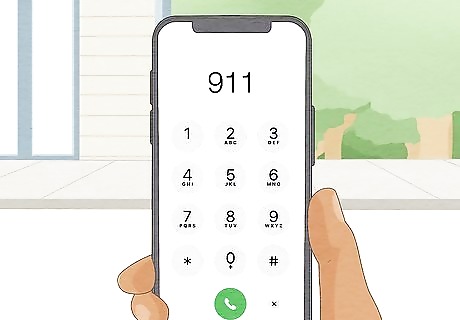
Leave your home ASAP and call the fire department or 911. Evacuate your home as soon as you’ve determined there’s a gas leak. Once you’re a safe distance away from your home, like across the street, contact the fire department and let them know there is a gas leak. Only re-enter your home once the fire department or other emergency responders have deemed it safe.

Turn off your gas line and pilot lights as you exit your home. Locate the main gas valve near your primary gas meter, usually found on the side of your building or in a cabinet inside. Then, turn the valve so it’s perpendicular to the gas pipes to turn it off. Stopping your gas main should also stop your pilot lights.
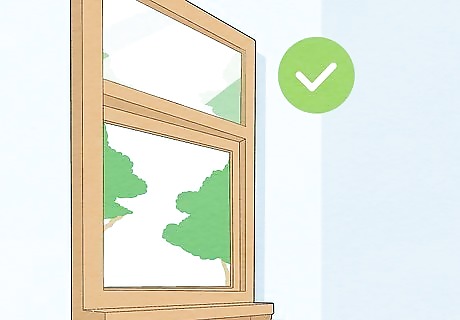
Open accessible windows and doors on your way out of the house. Keep your windows and doors open for at least 30 minutes so the gas inside your home can escape. That way, there is a less dangerous concentration in your home, and it’s not as likely to spark or explode. Even if all of your windows and doors are open, evacuate the premises until the gas leak is fixed. If you're unable to exit your building for any reason, stay near an open window or door while you wait for emergency responders to arrive.
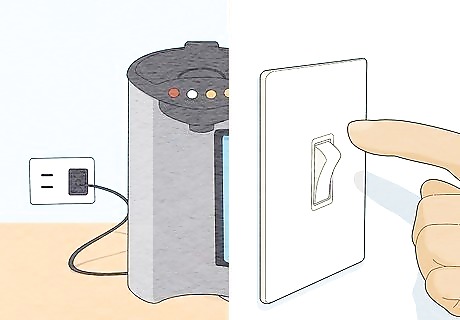
Don’t use any appliances or electronics inside. Anything electric can create a spark that could ignite a high concentration of natural gas. Avoid turning on any switches, electronics, or gas appliances while you suspect a leak. Avoid using lighters or anything with an open flame in or around your home until the leak is fixed. Don’t search for a gas leak with a flashlight or any other light source.



















Comments
0 comment